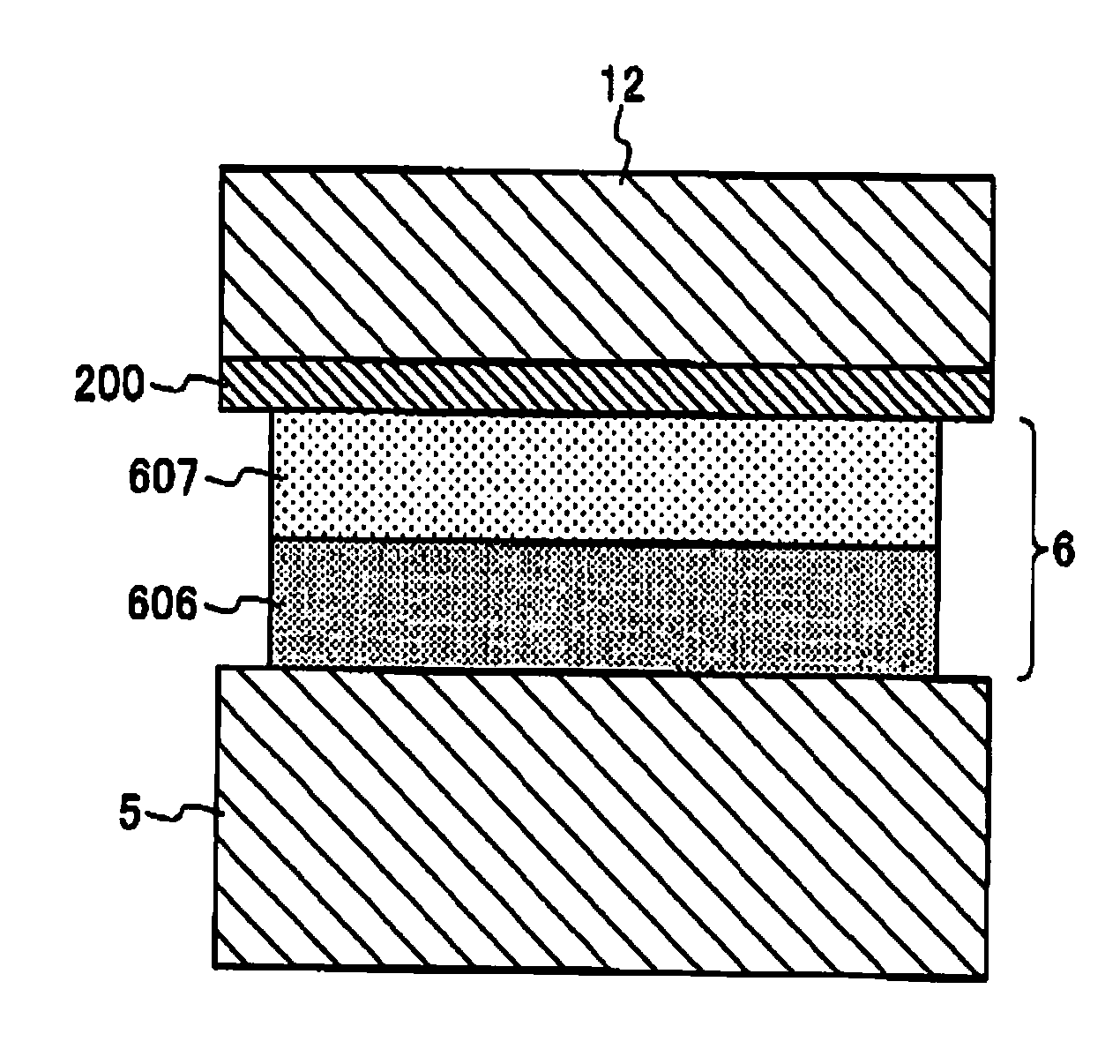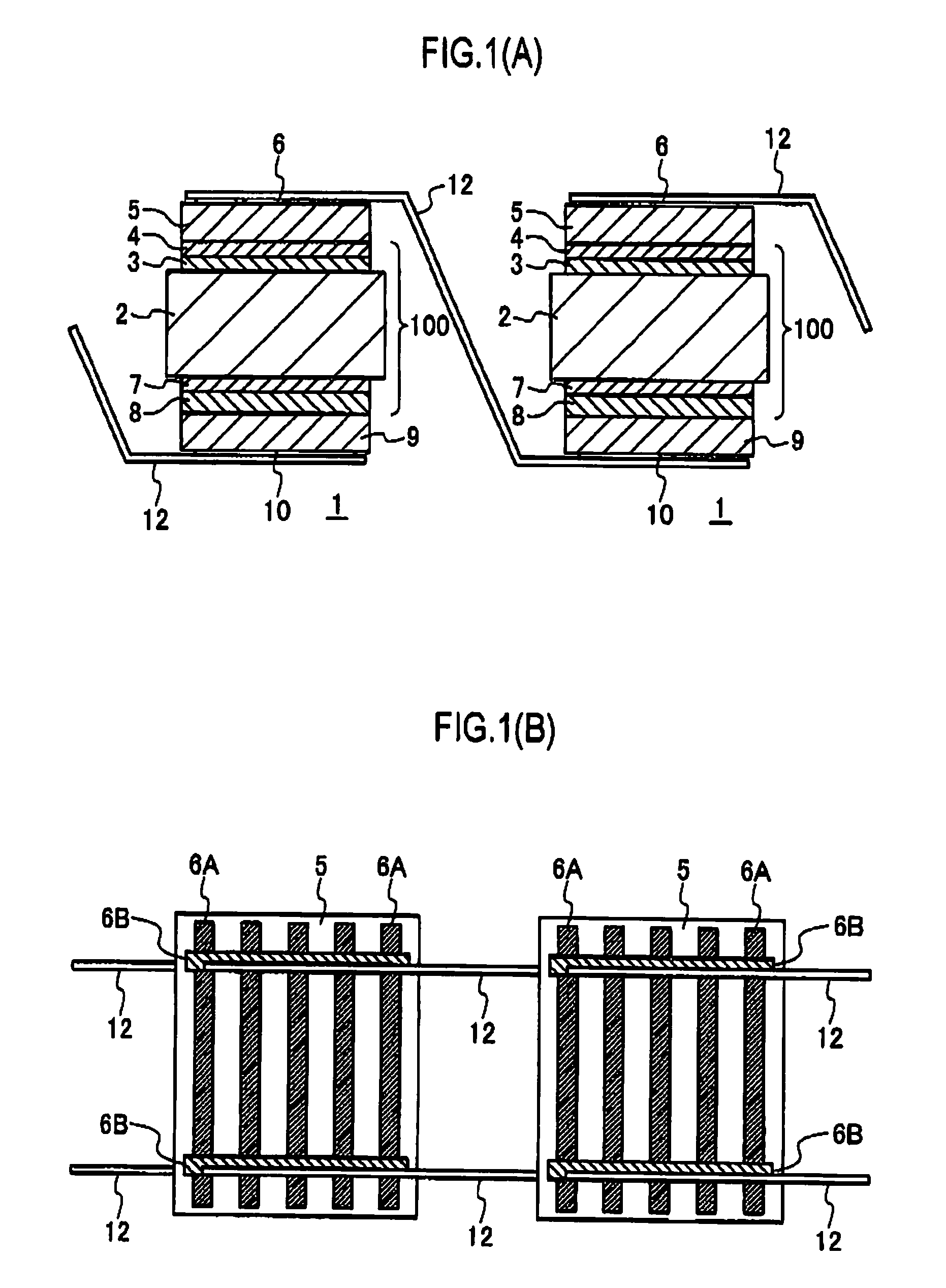Solar cell and solar cell module
a solar cell and solar cell technology, applied in the direction of pv power plants, non-conductive materials with dispersed conductive materials, radiation control devices, etc., can solve the problems of increasing contact resistance, solar cell modules are particularly susceptible to temperature change, and the environment is susceptible to change, so as to reduce stress and weaker the adhesion of thermosetting resins
- Summary
- Abstract
- Description
- Claims
- Application Information
AI Technical Summary
Benefits of technology
Problems solved by technology
Method used
Image
Examples
first embodiment
[0025]Descriptions will be provided hereinafter for a first embodiment of the present invention by referring to the drawings.
1>
[0026]FIG. 1 is a structural drawing for showing a solar cell 1 according to the present embodiment. FIG. 1(A) is a cross-sectional structural drawing. FIG. 1(B) is a plan view viewed from the light-incidence side. Note that FIG. 1(A) is the cross-sectional structural drawing of the solar cell 1 taken in the longitudinal direction of a bus bar 6B shown in FIG. 1(B).
[0027]The solar cell 1 shown in FIG. 1 is an example of a solar cell having amorphous semiconductor layers in its connecting surfaces to which tabs 12 are bonded, respectively.
[0028]A substantially-intrinsic semiconductor (i type) amorphous silicon layer 3 and a p type amorphous silicon layer 4 are sequentially stacked on a principal surface of an n type single-crystal silicon substrate 2. In addition, a substantially-intrinsic semiconductor (i type) amorphous silicon layer 7 and an n type amorpho...
second embodiment
[0076]Descriptions will be provided hereinafter for a second embodiment of the present invention by referring to the drawings.
1>
[0077]The structure of the solar cell 1 and the solar cell module according to the present embodiment are the same as the structure of the solar cell 1 and the solar cell module according to the first embodiment. For this reason, descriptions will be omitted.
6>
[0078]Next, detailed descriptions will be provided for a structure of the collector electrode 6 which is a characteristic part of the present invention. FIG. 6 is a magnified cross-sectional structural drawing for explaining the structure of the collector electrode which is arranged on the light-incidence side.
[0079]As shown in the drawing, the collector electrode 6 according to the present embodiment having a two-layer structure including: a first layer 606 arranged on the side in contact with the transparent conductive film 5; and a second layer 607 arranged on the side in contact with an solder lay...
PUM
| Property | Measurement | Unit |
|---|---|---|
| thickness | aaaaa | aaaaa |
| thickness | aaaaa | aaaaa |
| particle size | aaaaa | aaaaa |
Abstract
Description
Claims
Application Information
 Login to View More
Login to View More - R&D
- Intellectual Property
- Life Sciences
- Materials
- Tech Scout
- Unparalleled Data Quality
- Higher Quality Content
- 60% Fewer Hallucinations
Browse by: Latest US Patents, China's latest patents, Technical Efficacy Thesaurus, Application Domain, Technology Topic, Popular Technical Reports.
© 2025 PatSnap. All rights reserved.Legal|Privacy policy|Modern Slavery Act Transparency Statement|Sitemap|About US| Contact US: help@patsnap.com



